Media | Articles
First Look Review: 2022 Cadillac CT4-V Blackwing
There will come a time when these things are dead and gone. When gasoline is taxed so heavily as to be a luxury and driving your own car on public roads carries social stigma. The day where you explain to some child that, yes, we actually did burn old dinosaur bones in metal boxes while tear-assing down the road, and we liked it! Hell, you will say, some of those cars were loud on purpose, just great animal noise and the freedom of travel without cord and plug.
Was it good, they will ask.
A few of those cars were, you will answer. A few beyond that would devolve you to your own animal noises.
Until one day, when the tide shifted, and we moved on.
Cadillac’s CT4-V and CT5-V Blackwing models serve as two-part swan song: GM says the pair will be the last gas-powered performance Cadillacs in history. EVs are next, already in development. But what a song. What a cool thing to witness. The letter V once meant as fast as Cadillacs got. As of last year, the letter merely signifies the division’s “ordinary” performance. The track-ready cannons are now dubbed Blackwing. If that name sounds familiar, remember that General Motors first applied the moniker to a now-dead four-cam V-8 in a version of the also-dead Cadillac CT6.
Marketplace
Buy and sell classics with confidence

You should probably not ask why they repurposed this particular name, nor who is actually buying track-focused Caddies. The discontinued but pleasant ATS-V, launched in 2016 to fight the BMW M3 and M4, met just a few thousand owners in three years of production. The CTS-V, a larger four-door, dribbled out of dealerships for years. Neat Nürburgring laps, yes, but also two face-plants in the market.
In that tradition, what we have here is a car company saluting tradition by building two more wonderful machines people are unlikely to care about. A shame, really, because there is remarkable work here, a 3900-pound rear-drive bullet that will fire into a corner in calmer and more engaging fashion than some of the best fast cars in the world.
So Blackwing is the old V. Convenient, because “CT4” is also a renaming. The car seen here uses GM’s Alpha platform, a company staple since 2012. The Blackwing variant is essentially a heavy refresh of the old ATS-V, with the same 3.6-liter twin-turbo V-6, the same six-speed manual (the delicious Tremec 6060), even the same torque rating. Horsepower is up by eight, to 472, thanks to intake and software revisions. The optional eight-speed automatic has been swapped for a paddle-shifted, 10-speed Hydramatic. The brakes are a tiny bit larger. Curb weight is up by nearly 80 pounds, but the electronically controlled limited-slip wears a new aluminum case, a 22-pound savings.
If that weren’t enough, you get a base price $2600 lower than what an ATS-V cost in 2018. The interior is massaged CT4, which is to say, adult calm and clean. Imagine how German cars once wore their cockpits, before certain manufacturers in that country became obsessed with tacky flash.
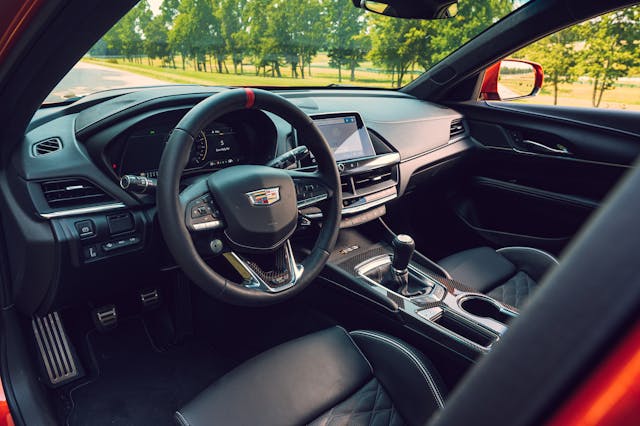
As in the ATS and the current Corvette, the standard magnetorheological dampers converse constantly with the diff, with the electrically assisted steering and the pedal-by-wire brakes, with the engine-management and variable stability/traction systems. The software watches your behavior, even with stability control defeated, adjusting engine and suspension variables to help progress. Each of the car’s chassis modes—Touring, Sport, Track, etc.—isn’t so much a bookmarked setting combo as a stack of priorities for hardware management. The approach isn’t unique these days, but GM’s tuning philosophy and those killer shocks make the car stand out.
Fine, you say: Tell me what all this means.
In the final session of the day at a press event at Virginia International Raceway, I hucked a CT4-V Blackwing through that track’s infamous climbing esses at 133 mph. (Context: GM video tells us that the last Corvette ZR1 exited that section at only slightly greater speed.) Nearly full throttle and just a kiss of apex dirt, wearing the stock Michelin rubber, A/C active, that lovely little AKG stereo tinkling out Peterson and Grappelli. The chassis had more in it, and the whole process was ballistic fun, but your narrator was in street clothes, and if we’re being completely forthright, he can be a right proper weenie without roll cage or safety gear in a stupendously fast vehicle he has just met.

Still. One of the dirty little secrets of this industry is how modern fast cars aren’t always fun. There is such compliance here, and perpetual control, even over curbs at a buck-thirty, that you are forever egged on. So you have to occasionally remind yourself exactly what is happening, or you can exceed your own comfort level while believing to be below it.
More tales from VIR: Have you ever jumped a bone-stock road car over a curb at 60 mph, two wheels up, stability off, then prepped to catch the thing, knowing it will land in a large and greasy slide? Have you spontaneously yelled “What?” into your helmet when the car lands without a pinch of drama, just this velvety little side-slip? As if the suspension realized what was happening and prepped itself in mid-air? (Spoiler: It does that.)
During the cool-down lap, I thought on compliance. The shocks felt subtly different from corner to corner. The usual-suspect Germans aren’t this forgiving or satisfying. The Italians are all too spastic. For that matter, few carmakers want a slipping tire to have that kind of smooth, talkative return to grip.
As with modern Corvettes, the vibe is somehow analog. A simulacrum that rarely feels digital. The steering is a bit wooly on center; the brake-by-wire middle pedal occasionally presents as a clammy simulation of hydraulics. But the car is also involving on a back road and—credit decent spring and sidewall stiffness—engaging work on uneven pavement. It wants you present.
After those laps, I marched over to the car’s chief engineer. A lovely Michigander named Tony Roma, who is not at all related to the restaurant of ribs.
Please tell me about the funny shock business, I said.
“It’s the shocks,” he said. Sly smile. “But also the whole car.”
We talked. Later, I spent 20 minutes with another development engineer learning how magnetic dampers are now quick enough to provide active pitch control, especially under braking. (Simplest execution: Come off the throttle in certain situations, the software applies a momentary spike in front compression and rear rebound, for stability.) During a 140-mph ABS trigger into VIR’s first corner, the CT4 seemed to squat-suck into the pavement. The same technology manages transient roll control, helps the differential maximize traction and turn-in, lands a zillion other tasks while you drive.
These are not new principles in GM performance cars, but there has been much progress of late in hardware and processing. On the ATS, for example, the dampers calculated piston velocity from suspension-position sensors. That job is now managed with accelerometers and inertial data. Freed of computational time, the system has grown even quicker, especially over low-frequency bumps or curbing, where the relatively slow wheel rate gives silicon precious milliseconds to think.
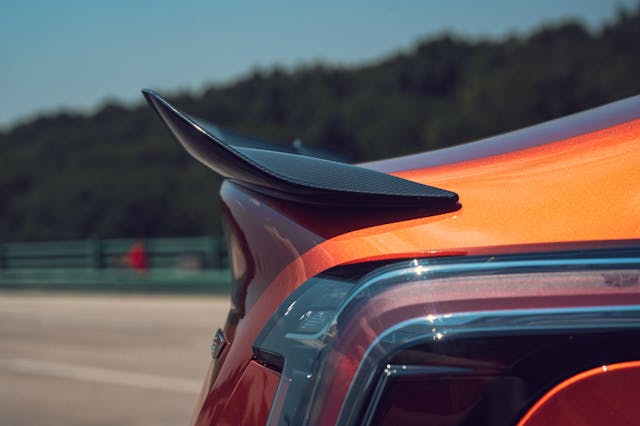
Blessed is the tech evolution that serves driver, not just speed. Especially when the resulting behavior recalls a Trans-Am car on dialed Penskes.
Above all, however, there is a sense that the people behind this delight swung for the fences. More than usual, as if it were their last chance at bat with a certain set of ingredients.
A few detail notes to close things out:
- In the ATS-V, this engine sounded blunt and hollow, like many GM V-6s. It’s now mostly refined rasp and pleasant induction honk. The active exhaust is best left quiet; wide open, it’s a shade try-hard with the fake burble-pops.
- The turbos help give bags of torque down low, just this ramping shove of grunt. That said, the motor really comes on steam at four grand. Lag is minimal, mostly at low rpm and high load.
- Cadillac claims the CT4-V Blackwing is the highest-downforce Cadillac road car in history. (Please feel free here to make jokes about the ’59 Eldorado.) Matching this claim requires both the Carbon Fiber 1 package ($4350) and the Carbon Fiber 1 pack ($2650). Those options aren’t cheap, but you do get a splitter and functional dive planes. Also underbody changes and a gloriously obnoxious ducktail spoiler.
- Manual CT4-V Blackwings get titanium connecting rods. Automatics use steel. In unrelated trivia, the automatic is predictably faster around a track. The manual is meaty and slick and can be flat-shifted; it also offers a defeatable rev-match function. Pick your poison to personal preference, but know that the Tremec is one of the all-time great gearboxes.
- Engineers benchmarked the ten-speed Hydramatic against Porsche twin-clutch transmissions, widely viewed as the best in the world. The Hydramatic undoubtedly meets certain PDK metrics, but the Porsche ’box still presents as more engaging and mind-reading.
- Two styles of sport seat can be had. As in the Corvette, the more aggressive option is fantastically supportive, but wide hips don’t fit.
- Claimed performance: 189-mph top speed, 1.04 g max lat, 3.9 seconds to 60 with the automatic (4.1 with the manual).
- On a personal note, your narrator has thought about this thing a significant amount since leaving VIR. Mostly in terms of financing and personal credit.
And so here we are, in the twilight of the gasoline performance car, gifted one of the last great fossil-drinkers. One of just a few modern vehicles to prompt deep and emotional thoughts on changing times.
Just before we moved on, there were great heights. And boy hell yes, child, it was good.
***
2022 Cadillac CT4-V Blackwing
Base price/as-tested: $59,990 / $87,775*
Highs: A potent and thoroughly modern sport sedan. Happiest on the track but still engaging on the road.
Lows: Steering is occasionally more heft than feel. Fuel mileage (16/24, automatic) won’t shock anybody. History suggests no one will buy it.
Summary: Old-school vibe, new-school speed. Last of a breed in more ways than one.
*The VIR event attended by the author featured multiple test cars in various levels of trim; this figure represents a fully loaded CT4-V Blackwing.

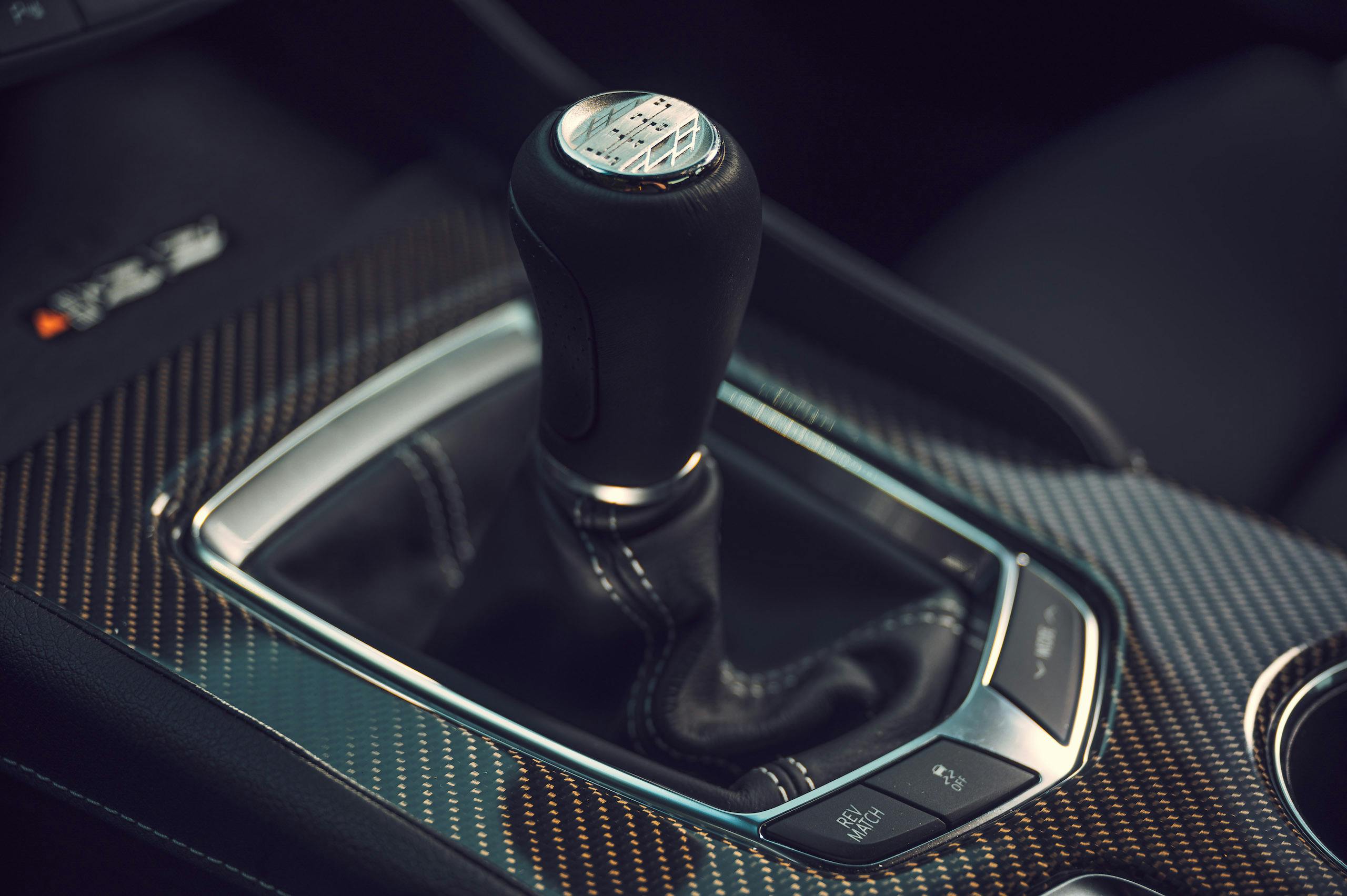
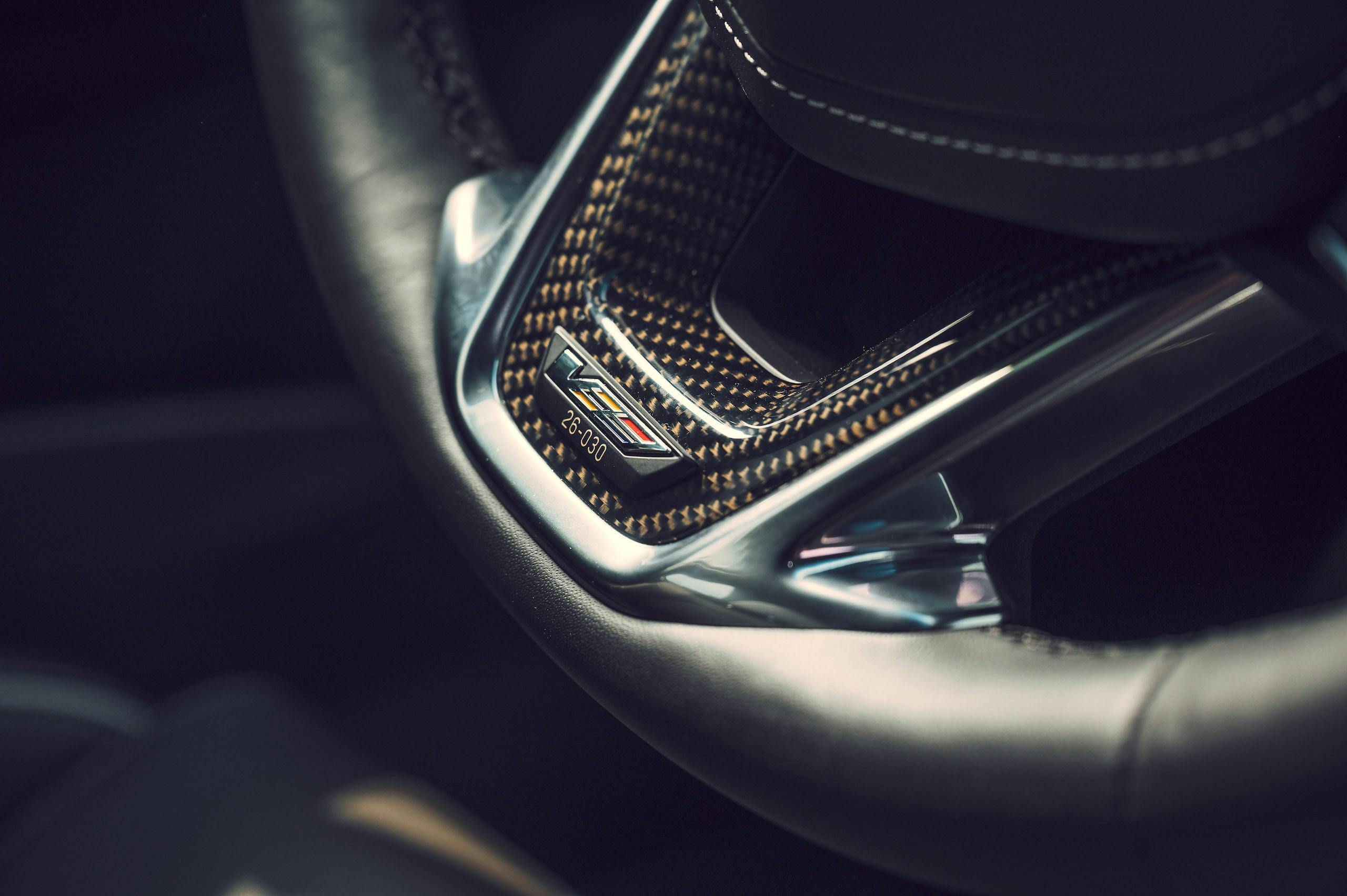
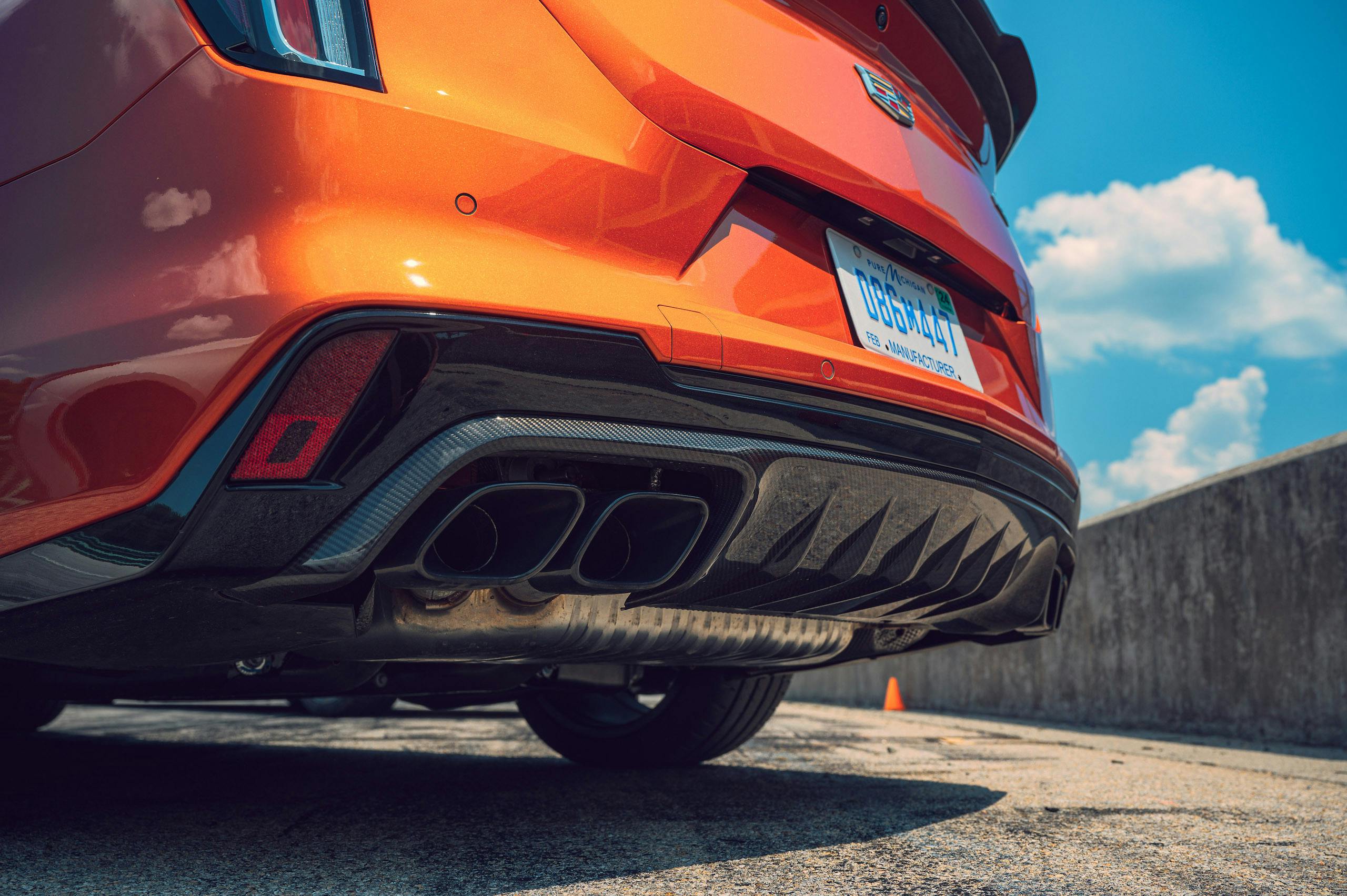

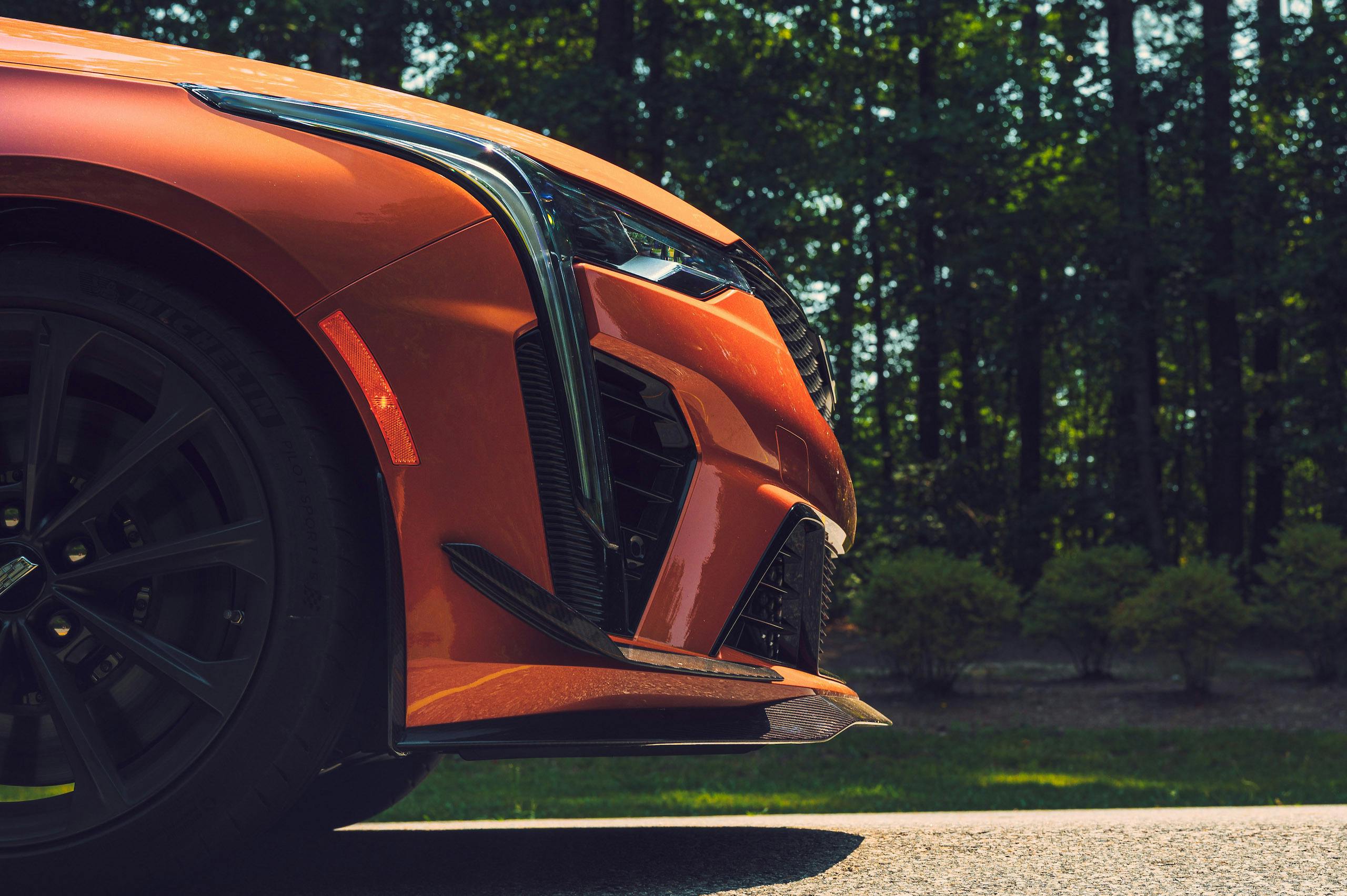
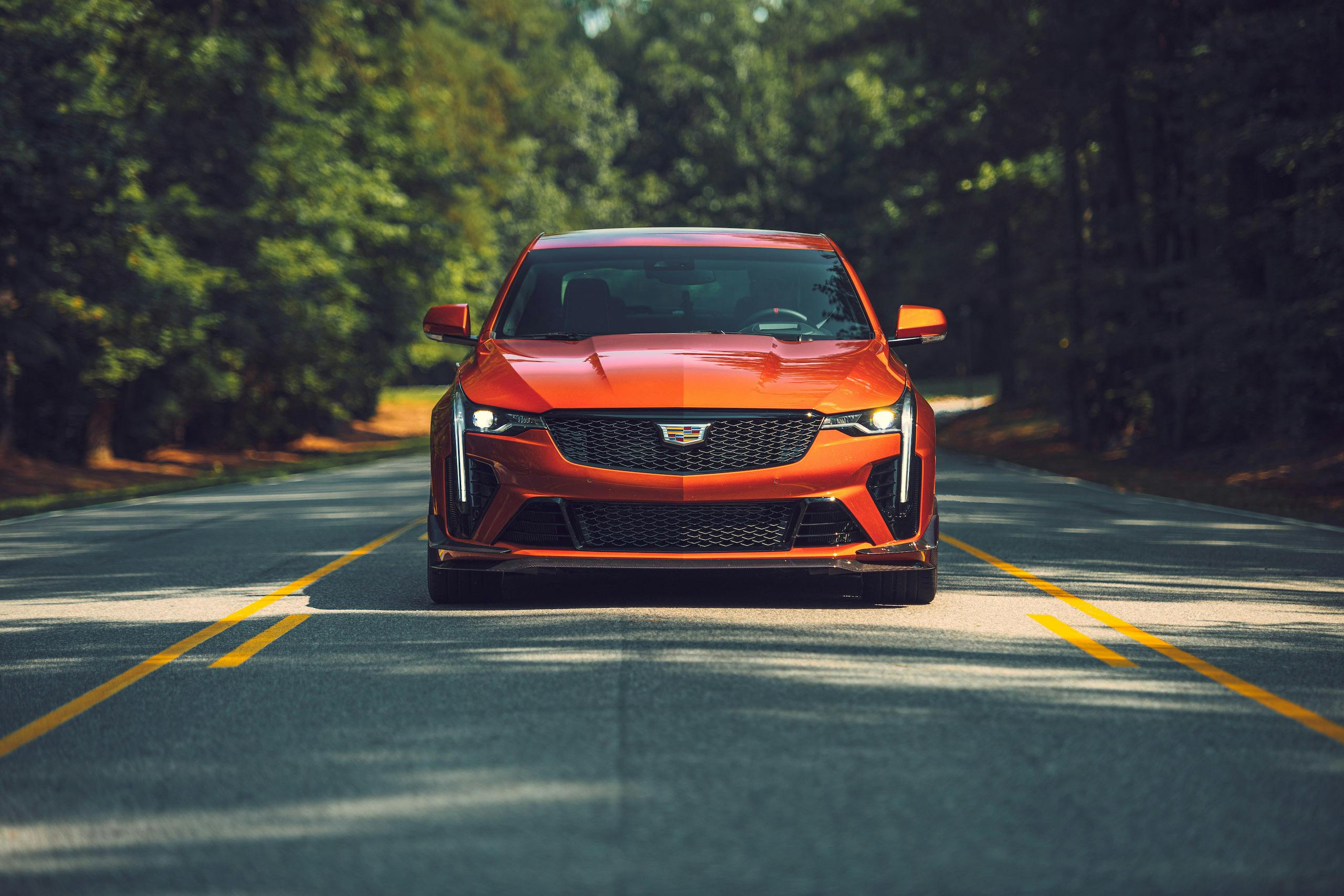
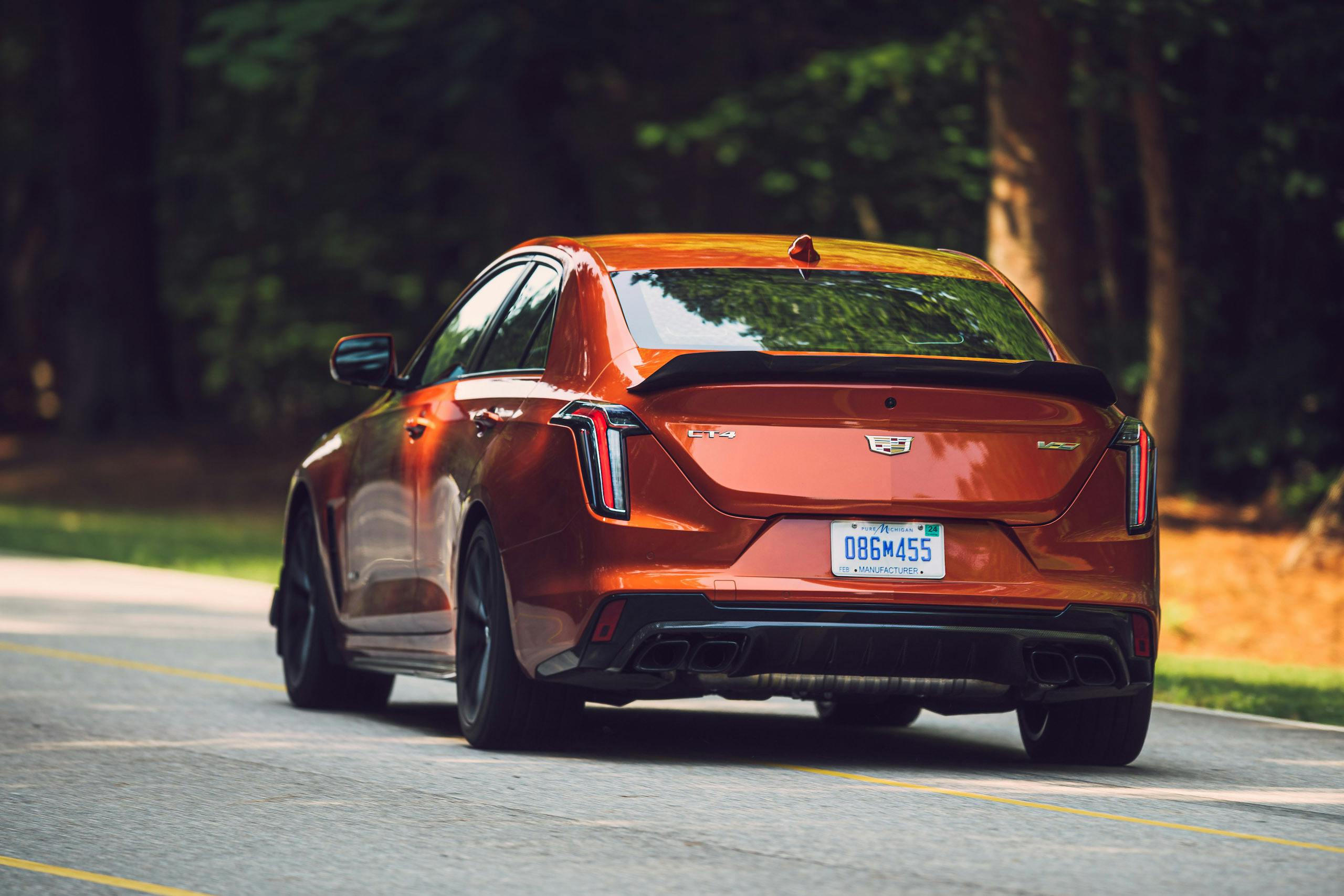

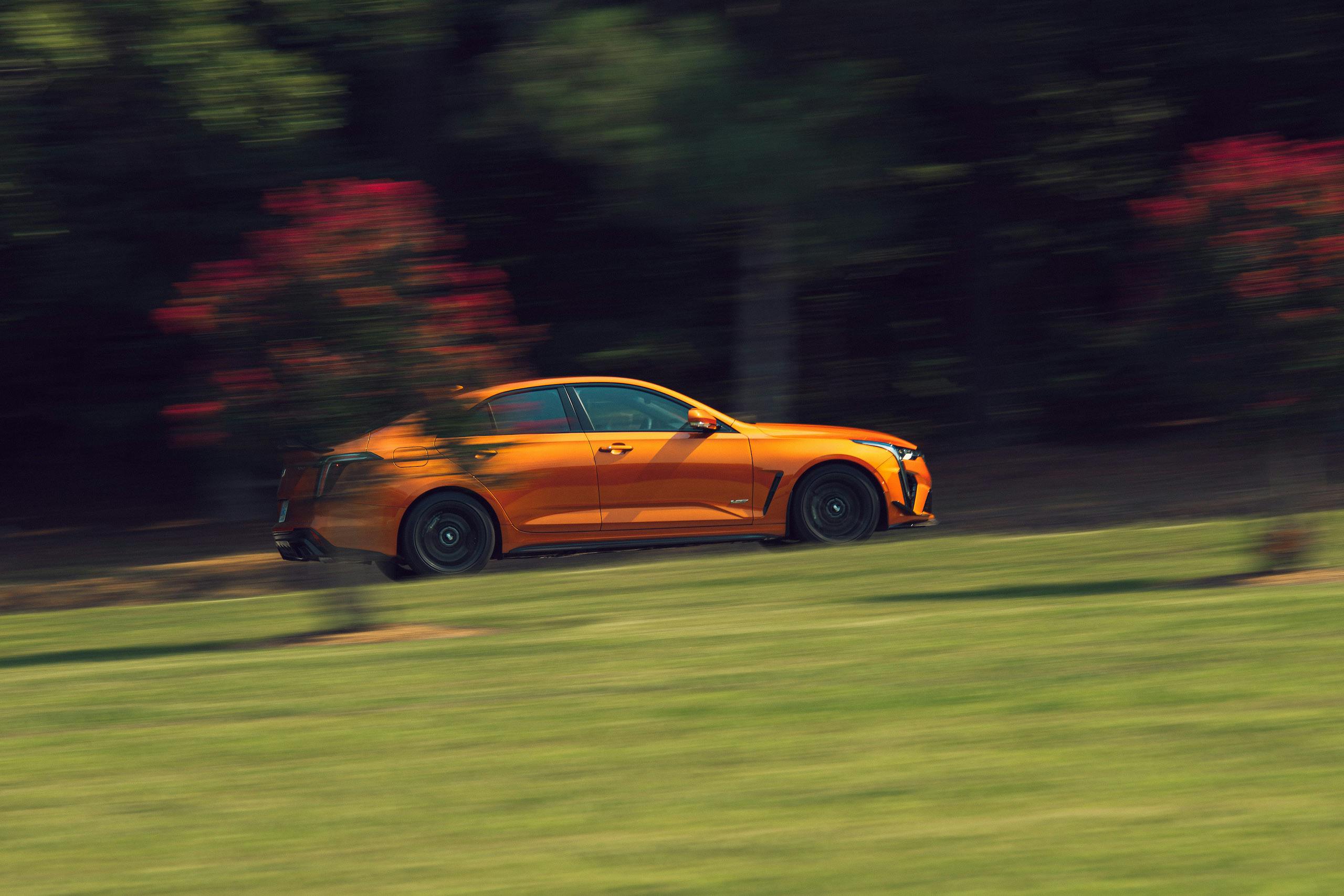

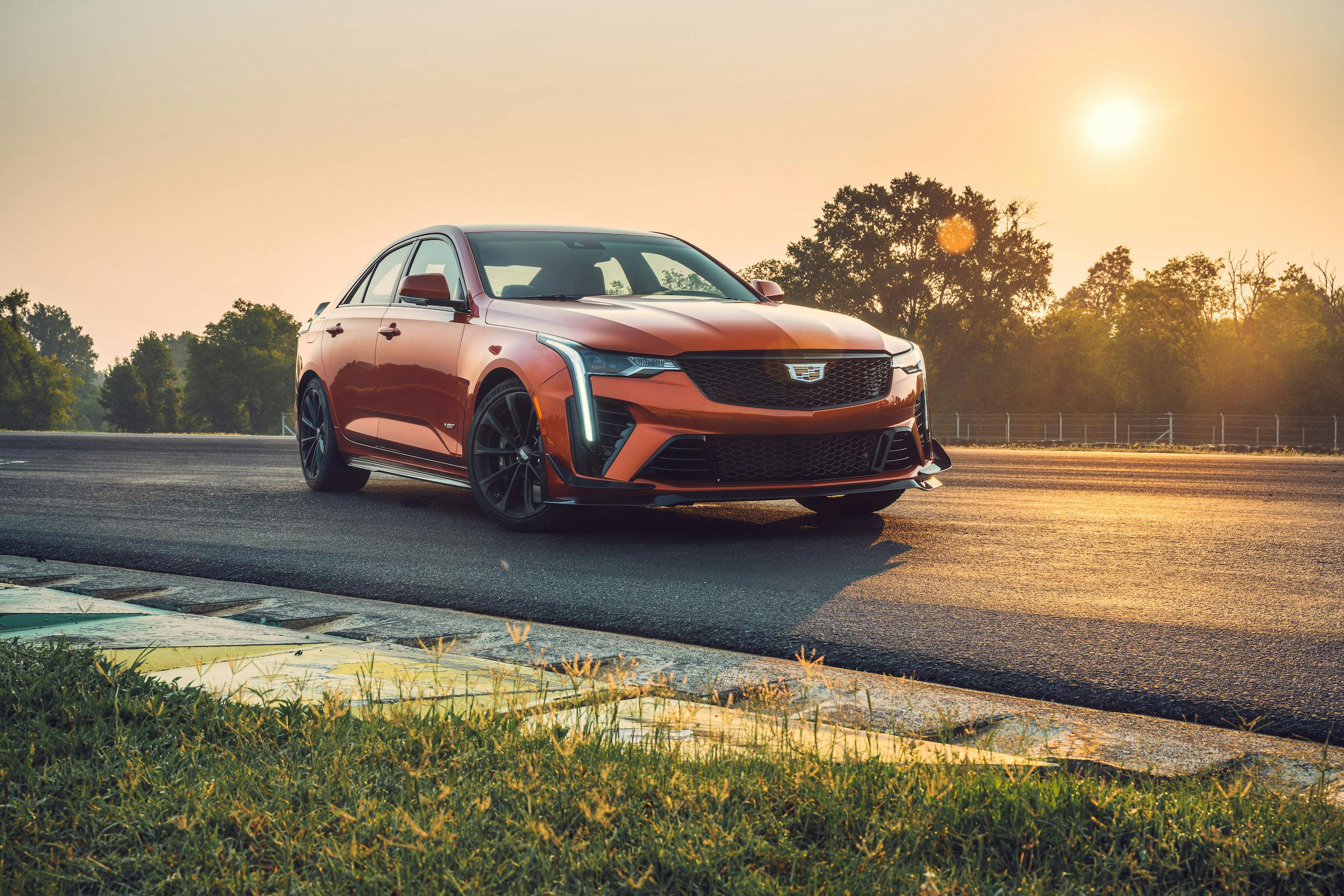
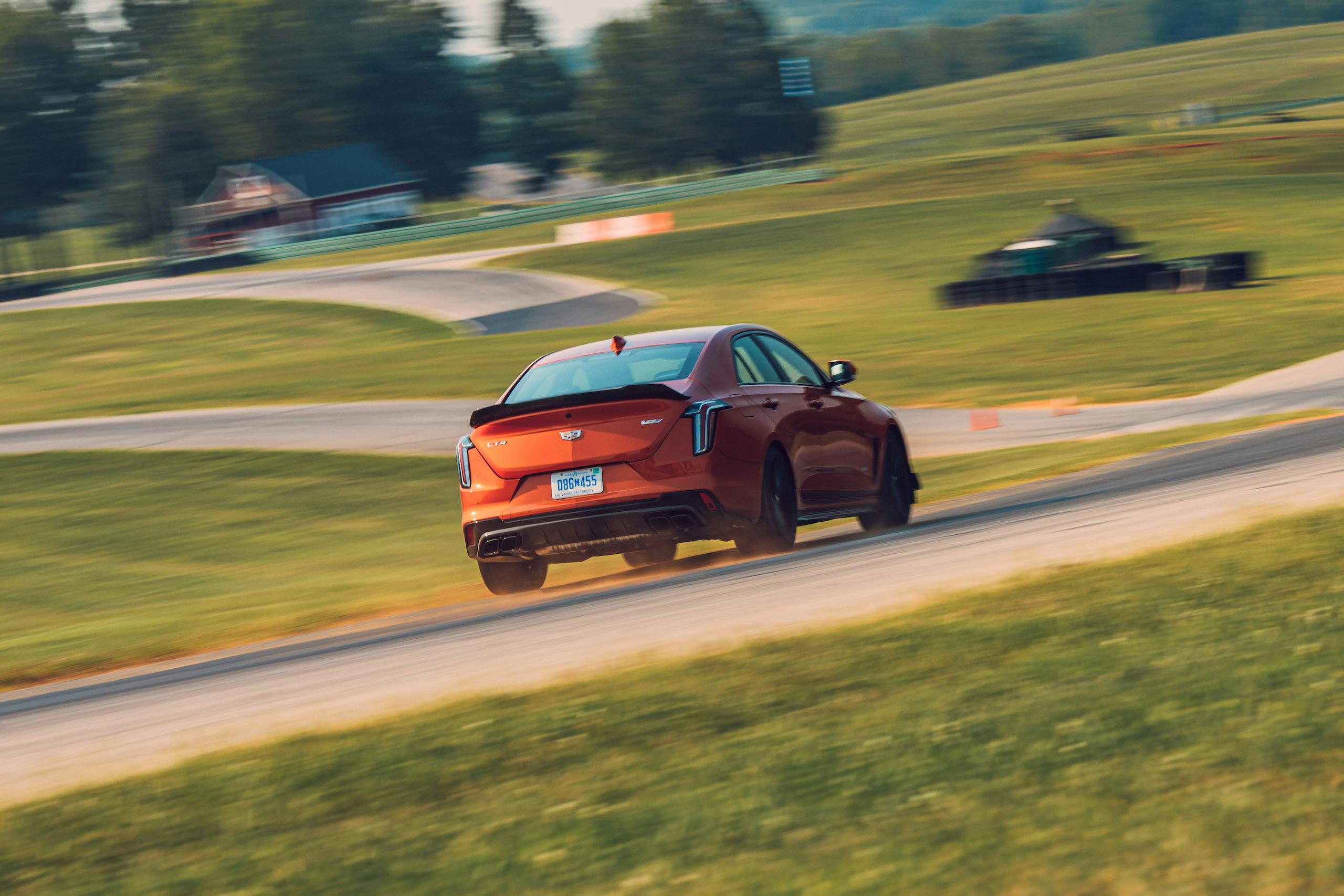
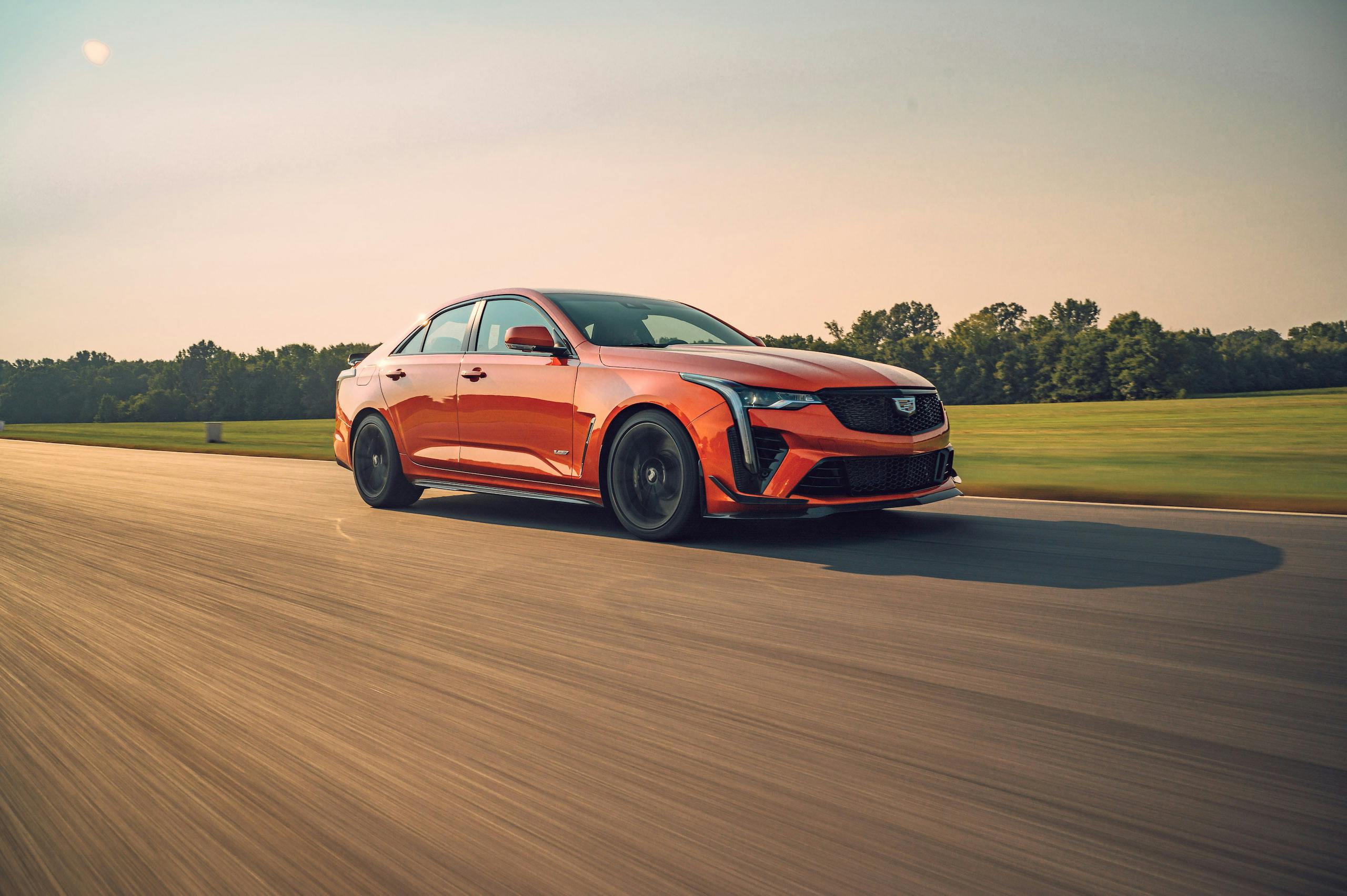
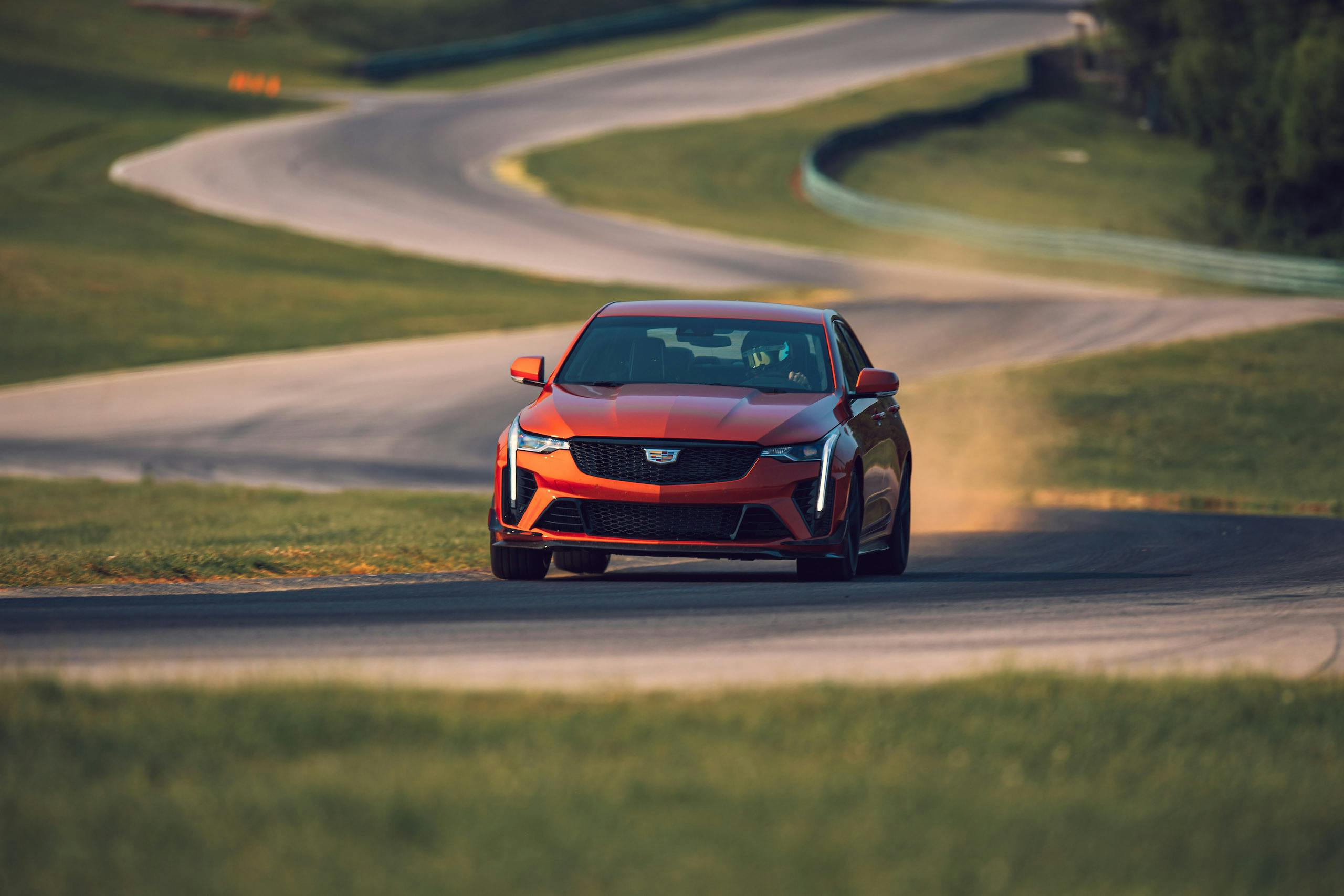
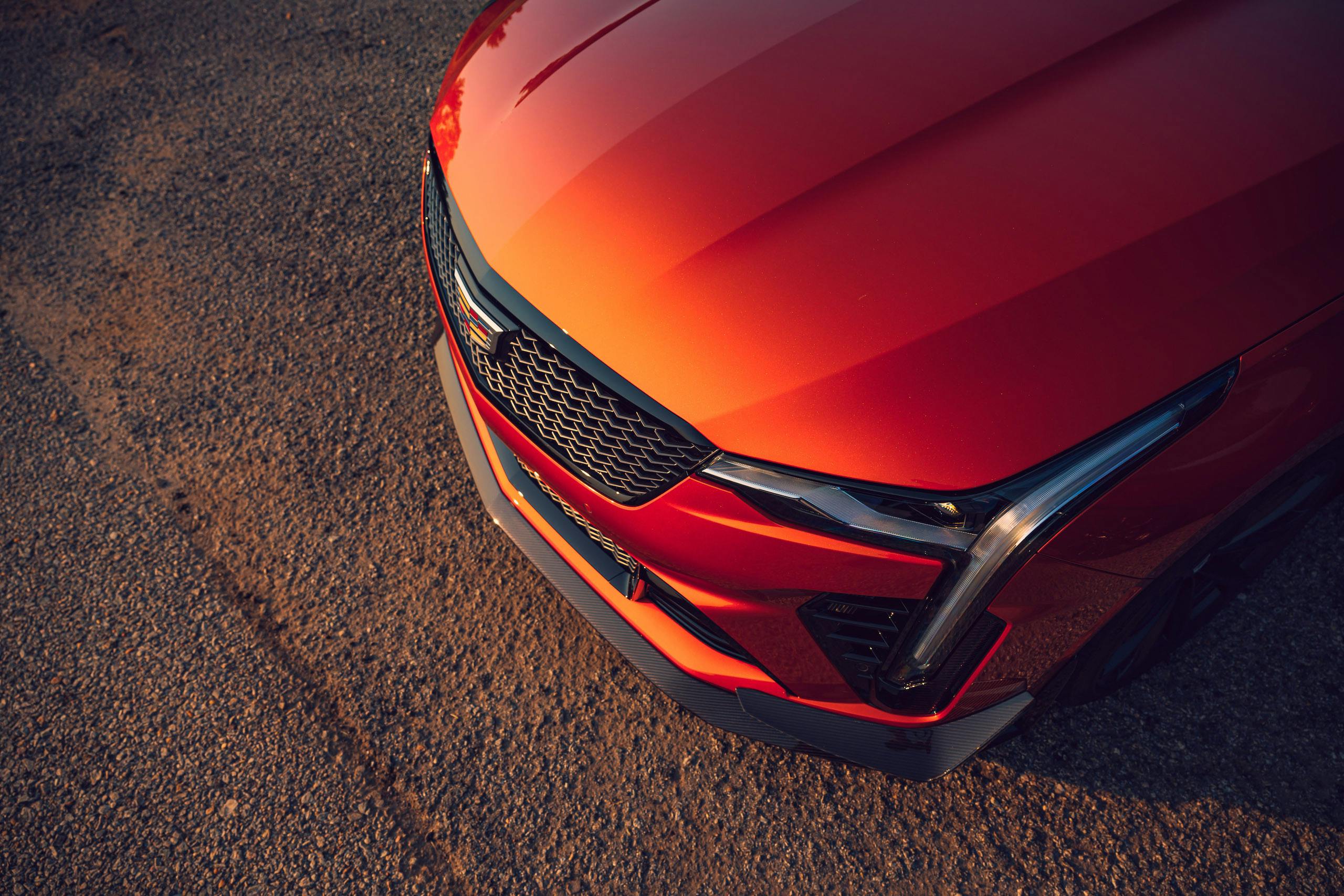
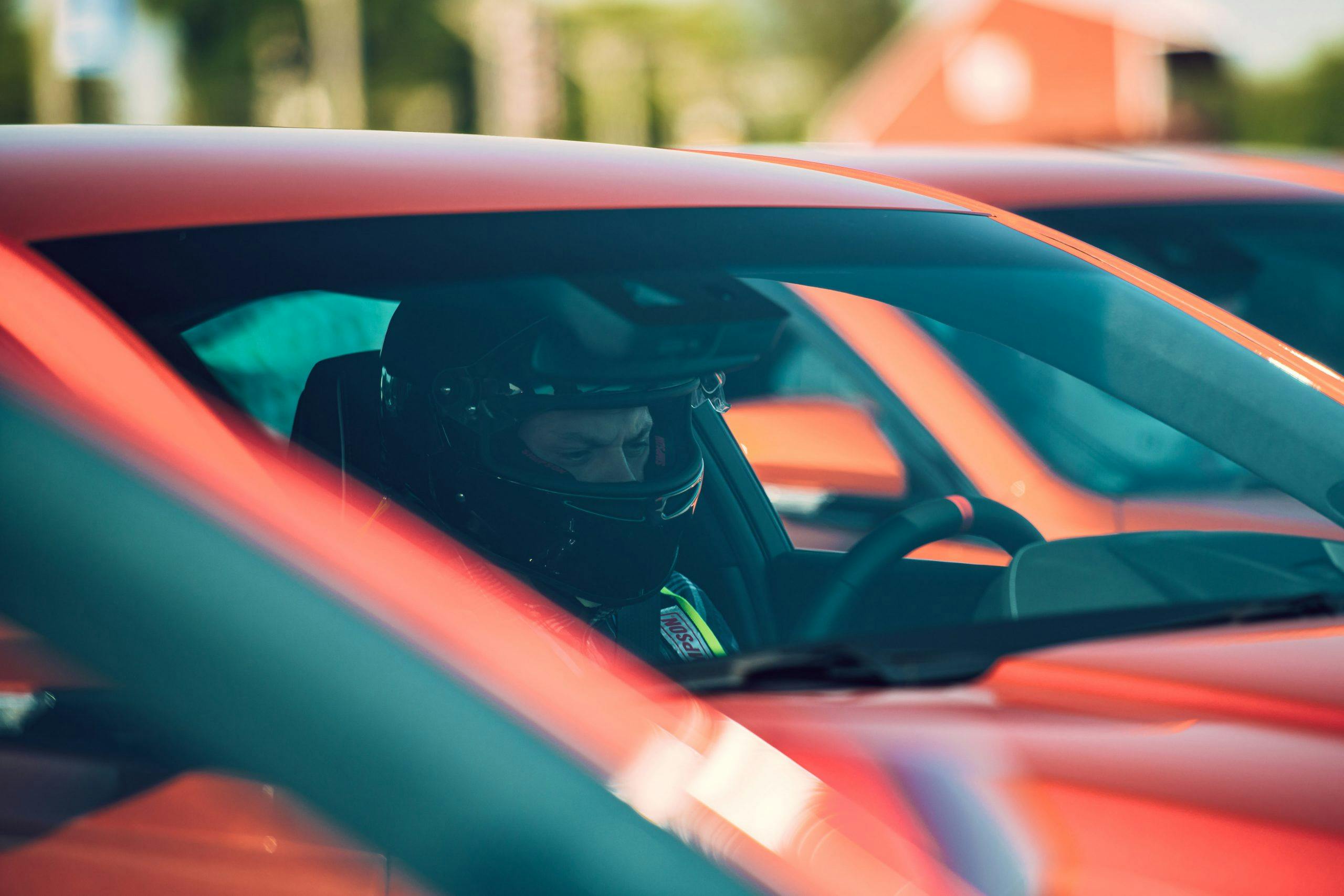
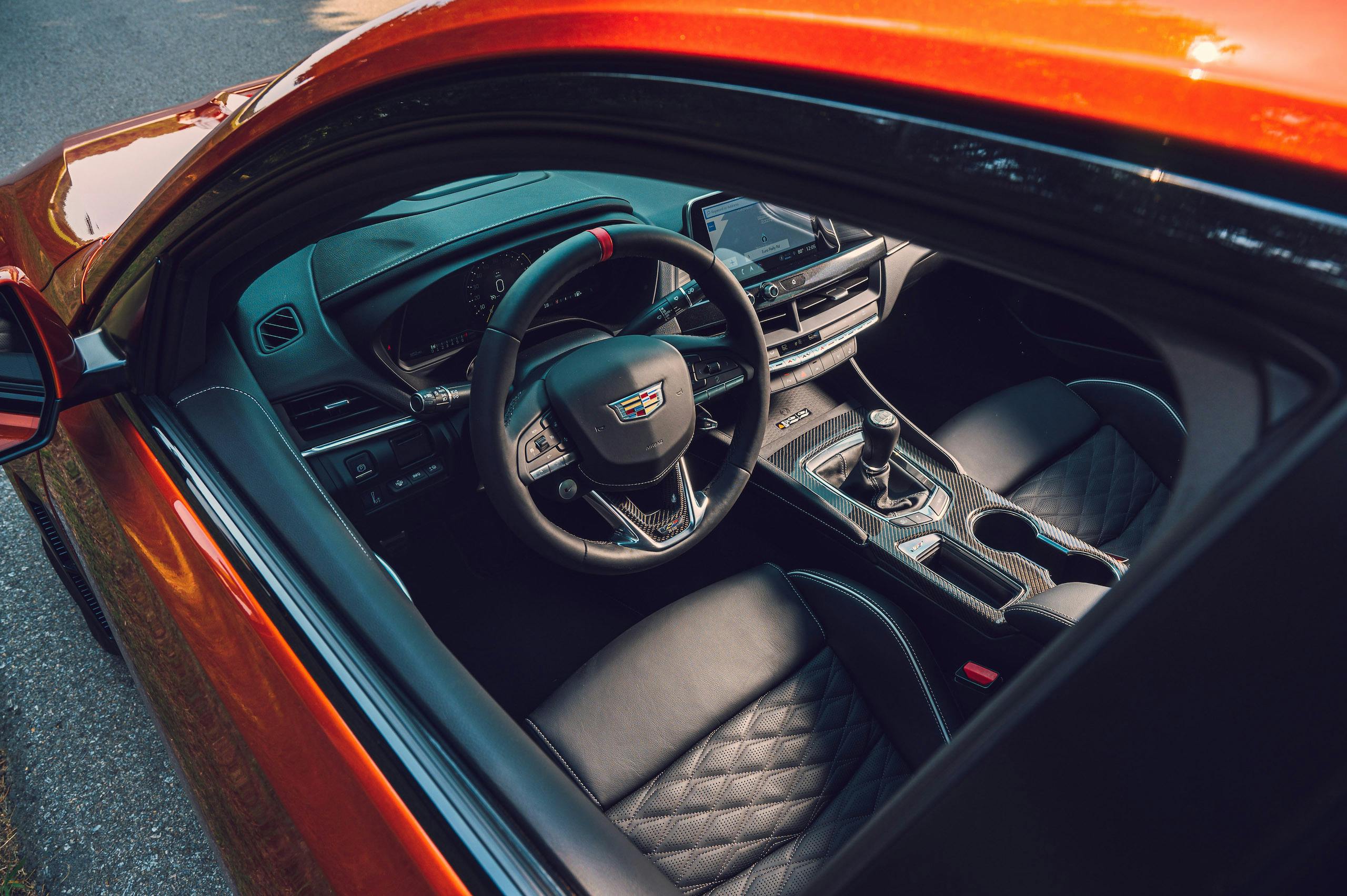
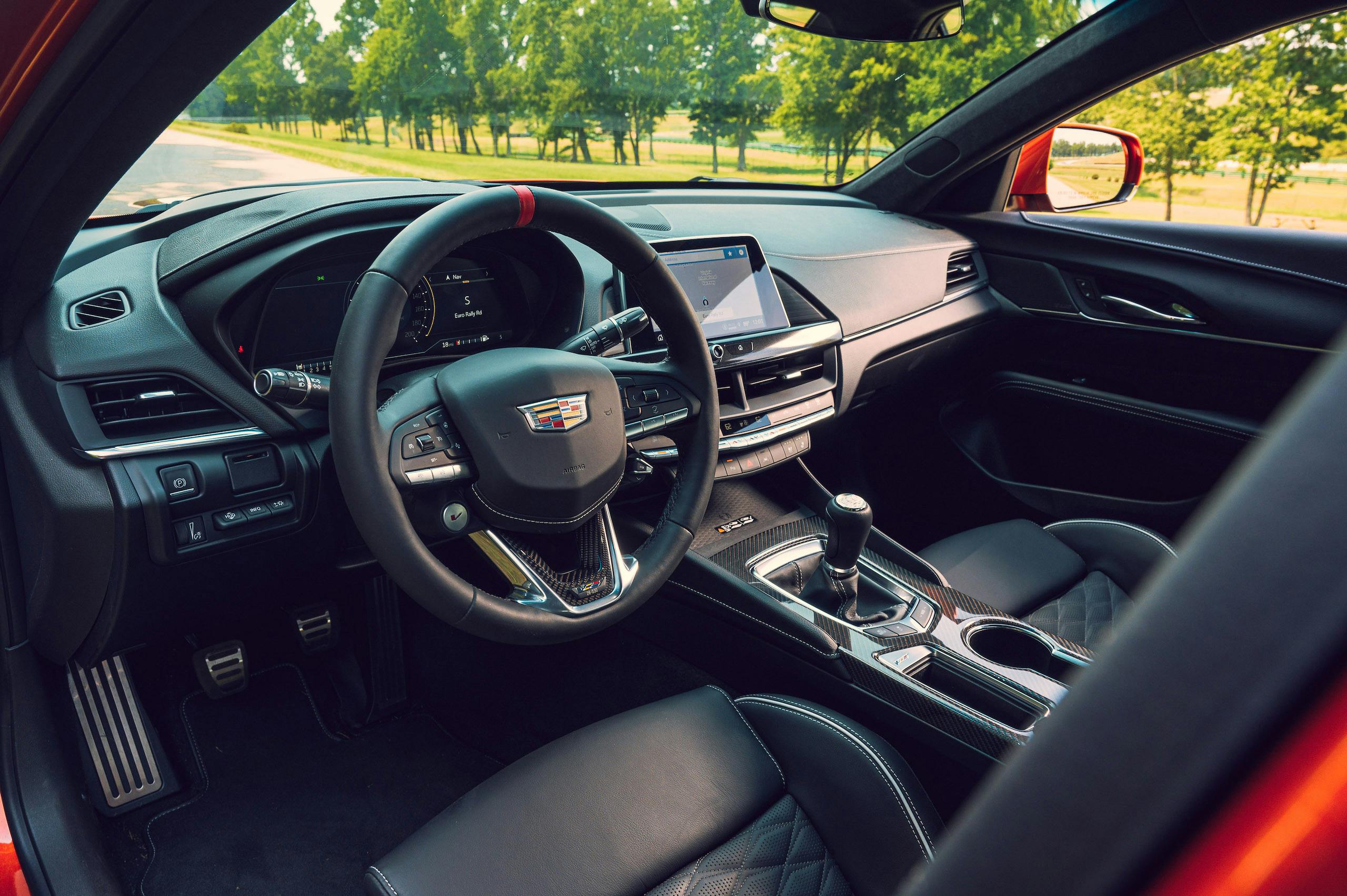
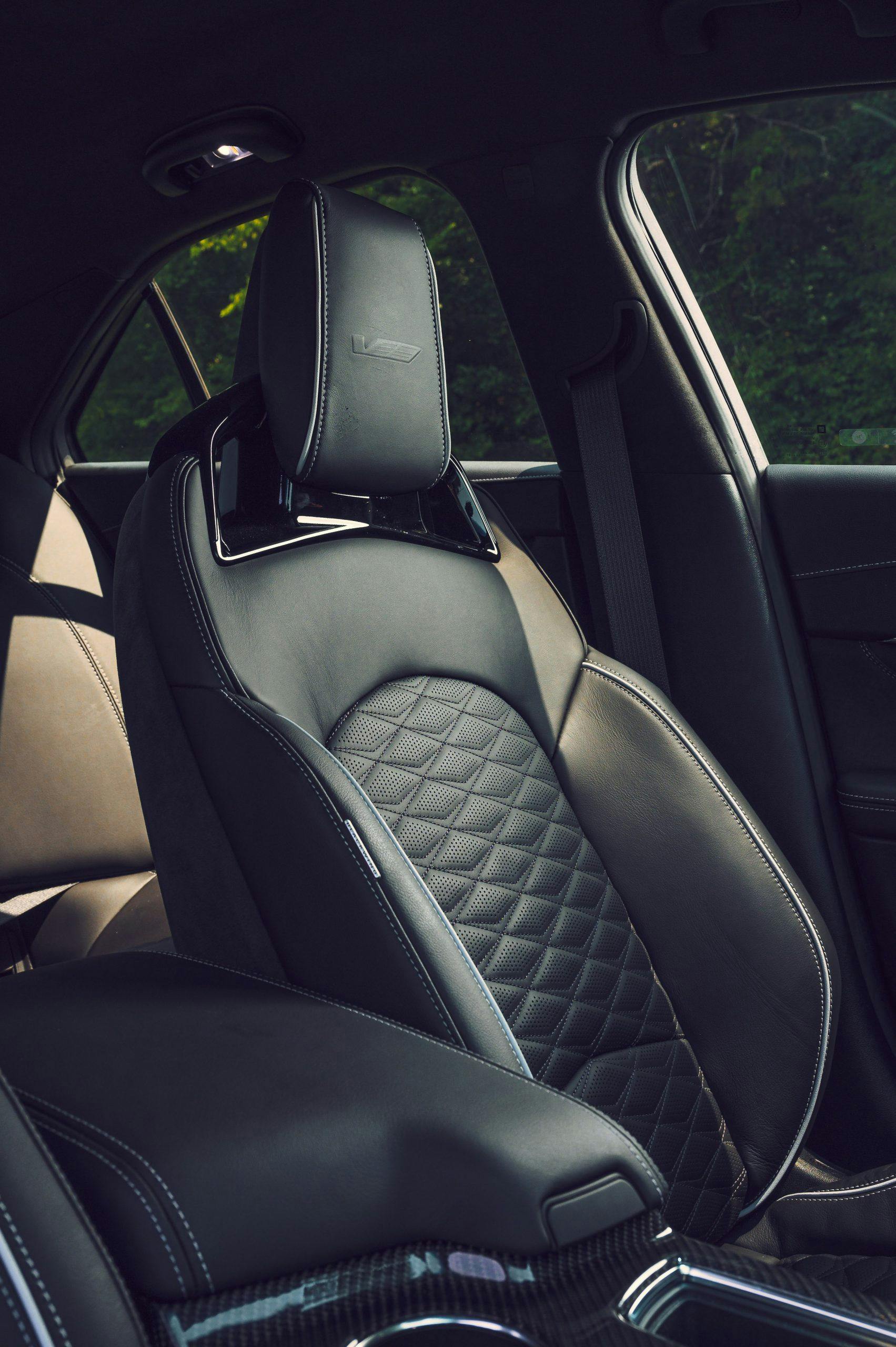
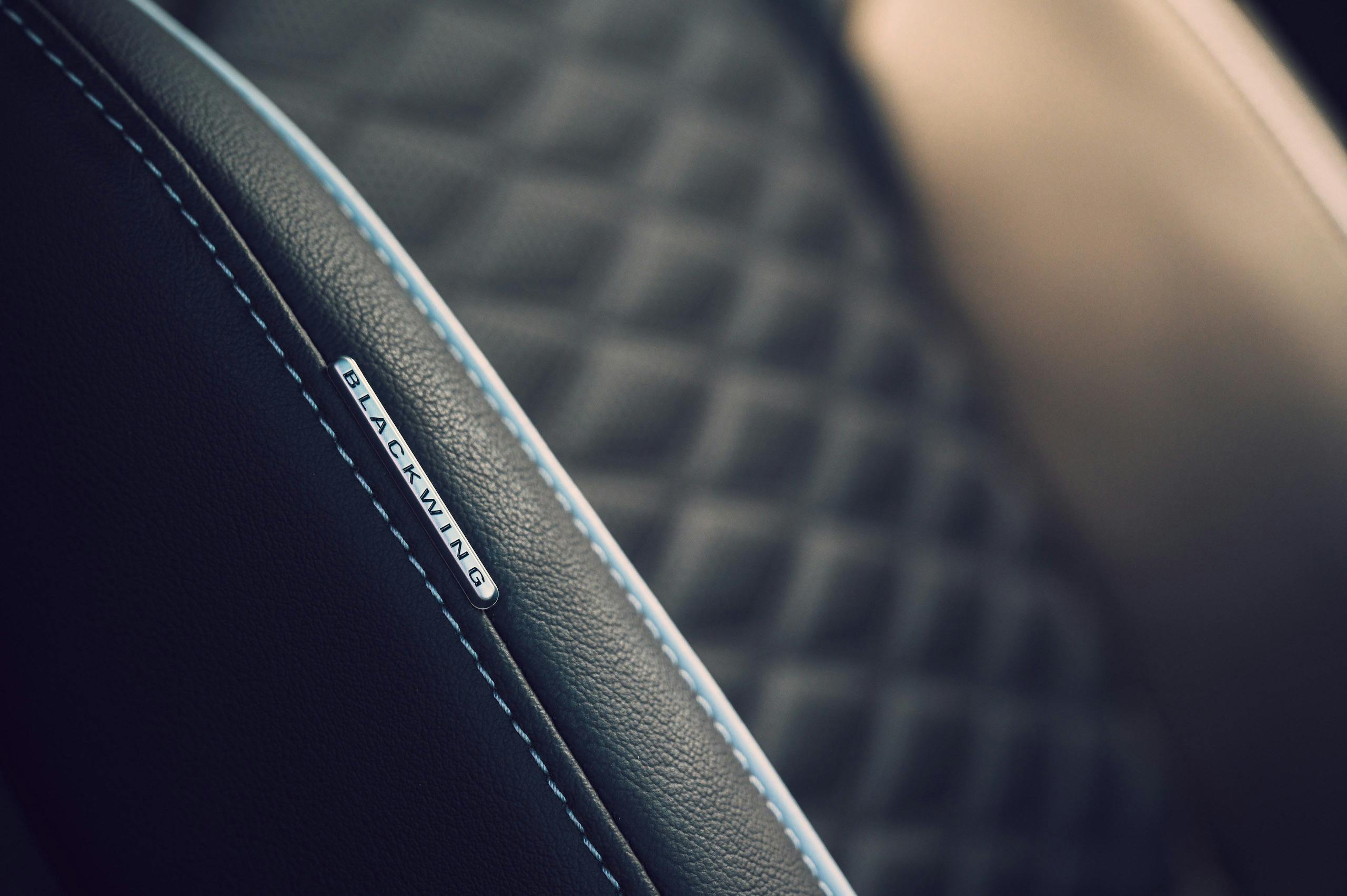
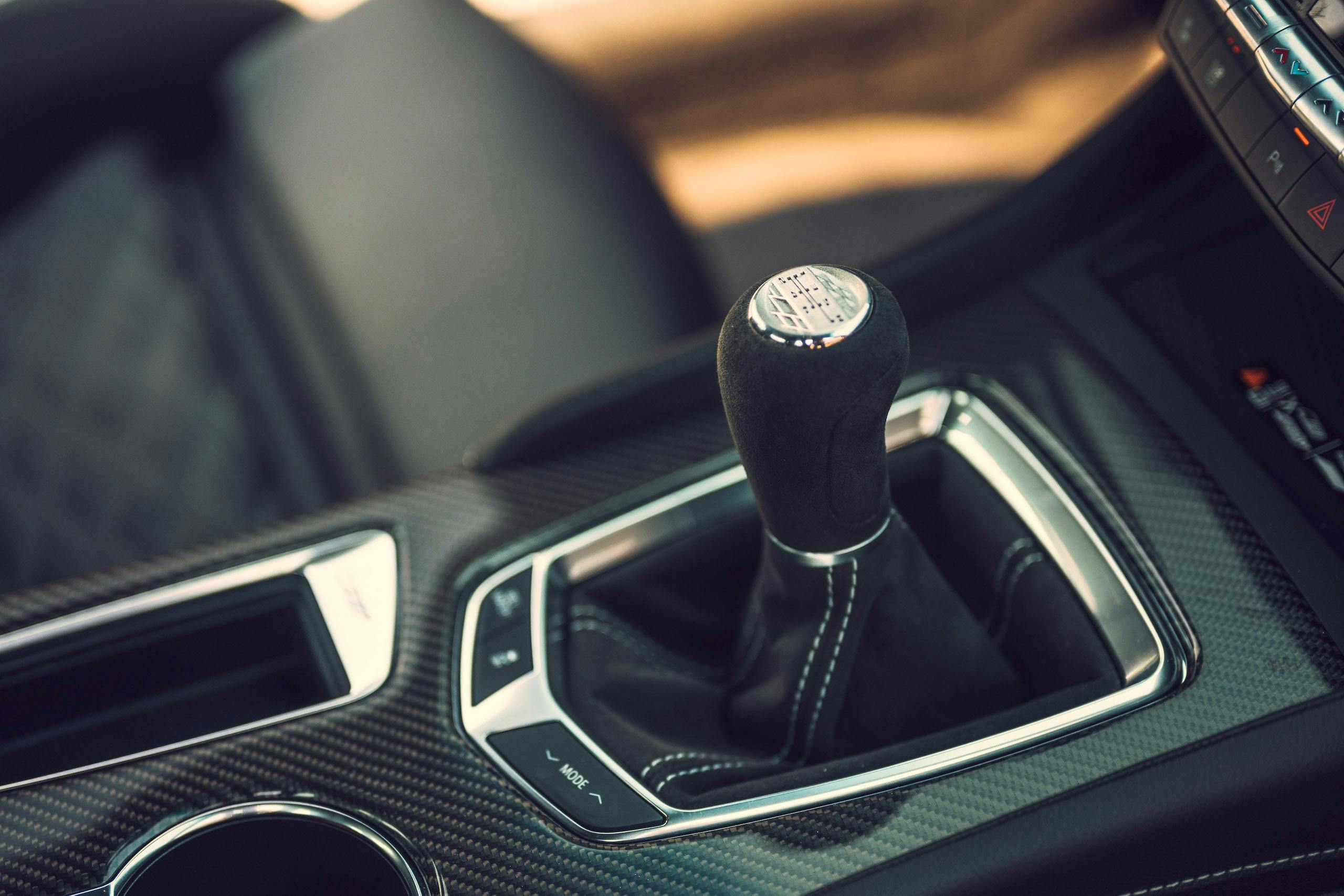

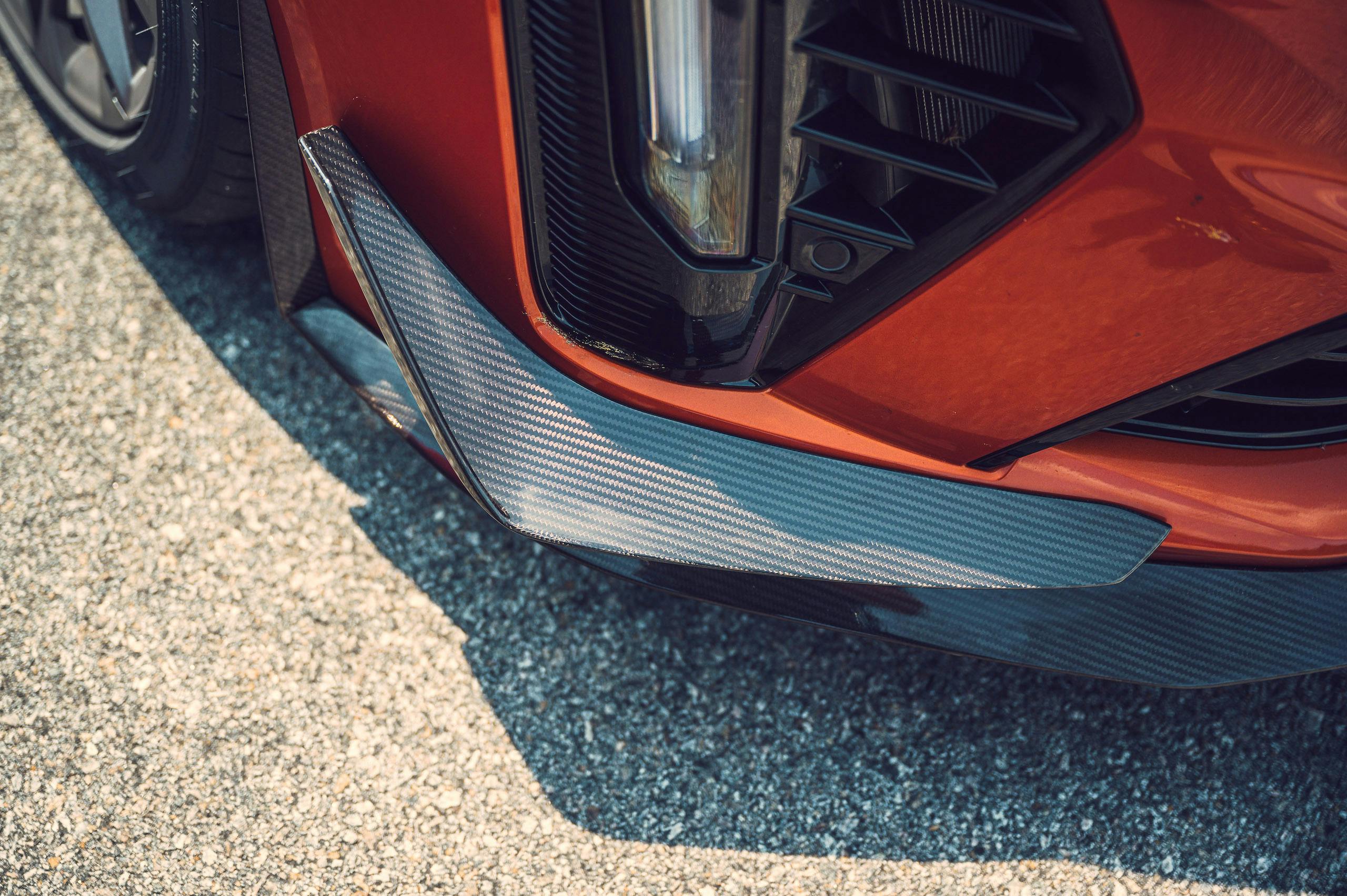

























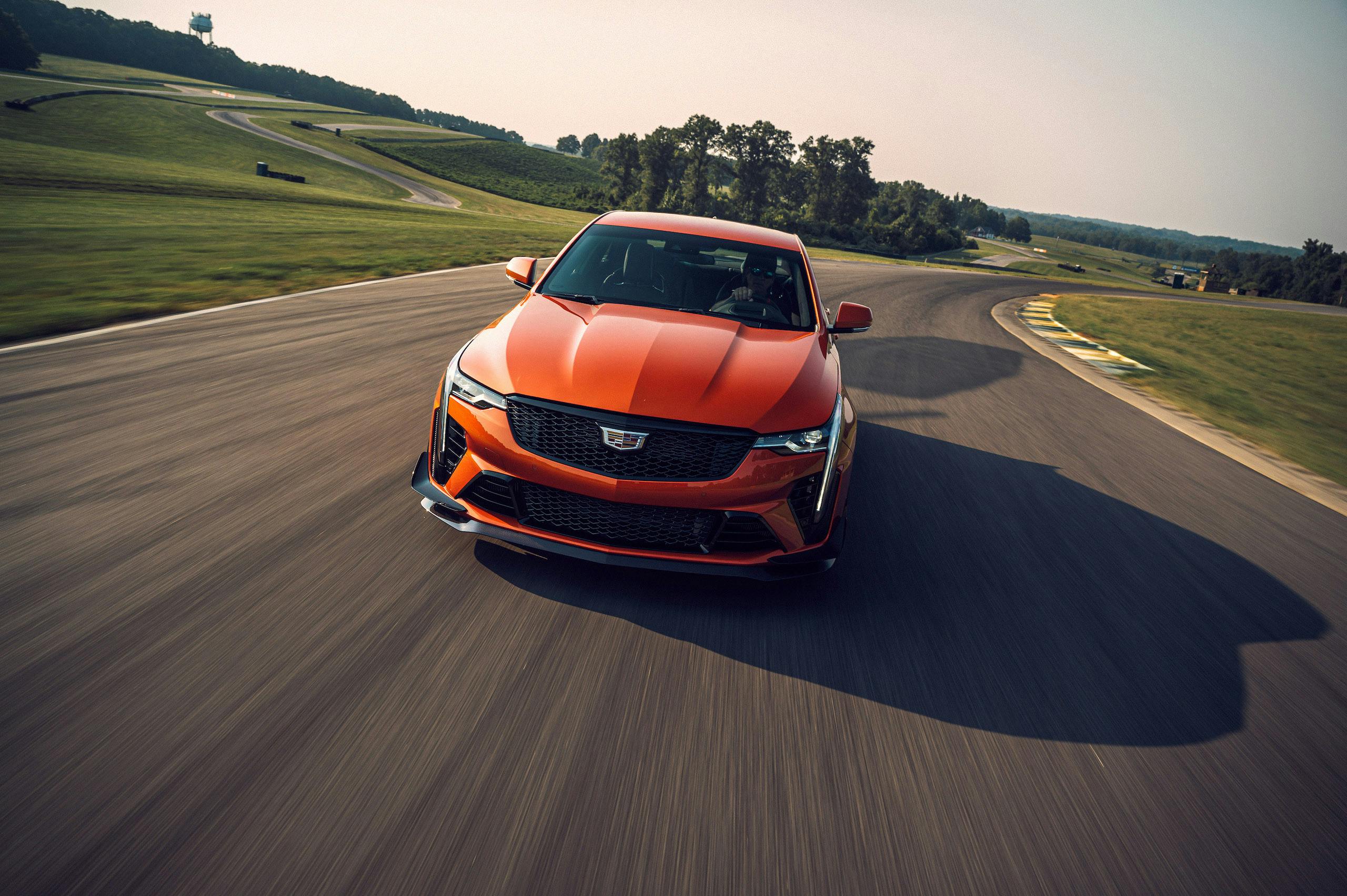
What a fantastic sports sedan, and with a sweet shifting manual transmission! GM engineers did the best they could given the corporate bungling that saddled the little Blackwing with a V6TT at her than GM’s legendary small block V8. With a version of the Corvette’a 495 hp LT2 this CT4 would have been far beyond anything from Europe or Japan and GM would have finally hit the swee spot for a driver’s car.
Unfortunately for a V8 we’re left with the overpowered and overpriced CT5-V Blackwing. I find the LT4 V8 an excercise in frustration on public roads, impossible to rev out in a safe and legal manner. The CT4-V Blackwing’s 3.6 V6TT is nice enough but lacks the smoothness and reliability of a V8 and despite being based on a DOHC V6 doesn’t rev any higher than GM’s pushrod V8. It also gets worse gas mileage and has a higher center of gravity.